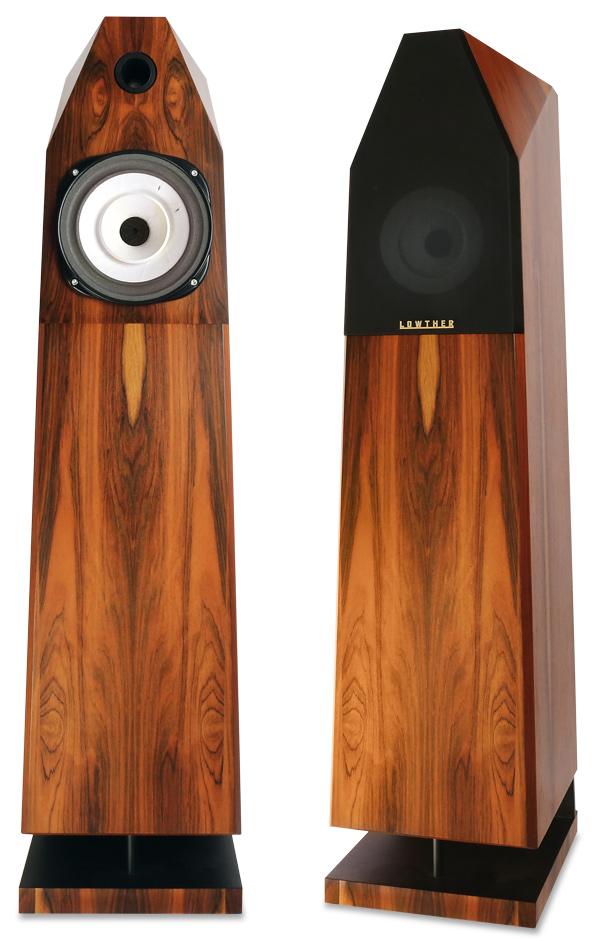Lowther Almira Loudspeaker

Although I am no devotee of horns, I adore two of the genre's specialists, Lowther and Klipsch, and recall the delights of the former's Bicor and Acousta. But I had thought Lowther had joined other defunct brands until I met Martin Thornton in late 2019, at the last pre-Covid Tonbridge Audiojumble. I was overjoyed to hear that he had acquired the company's remnants, designs, name and everything else needed to relaunch it. Three years on, and he's arrived with an all-new Lowther, dubbed the Almira.
After discovering that Jimi Hendrix's London abode was previously the home of George Frideric Handel, and Jimi owned Lowther Acousta 115s, inspiration struck. Both giants are honoured by the Almira, by sharing a name with the principal character in Handel's first opera. I guess it works better than calling it 'Foxy Lady', 'Fire', or 'Purple Haze' from Jimi's first LP.
Cabinet Meeting
There's an introductory price for the speakers of £12,000 per pair, rising to £19,920 – a large proportion of the cost is in the cabinetry, but this isn't merely a penalty for a stunningly veneered enclosure. Price will vary according to finish, both standard and luxury levels, with other woods including Olive, Australian Gum Walnut or Zebrano. The Almira sits below the top model in a range of five current speakers, the corner-horn TP2 above it, while both the new and 'Heritage' designs are complemented by a wide selection of raw drivers and blueprints for those who wish to build their own.
It is the cabinet's complexity which accounts for the outlay. Inside the Almira is a 2.3m folded horn, opening into the room at the base. The horn's path is convoluted, Thornton explaining that constructing an Almira cabinet is so labour-intensive that it takes six weeks to make each one.

At the front and top of the baffle are the DX3 'full-range' driver and above it a 20mm dome supertweeter, protected by a grille which completes the sculpted, faceted look. The grille is optional, but I think the speaker looks odd without it. My own tastes aside, at 1200x300x330mm (hwd), two Almiras are not going to disappear in, let alone blend into, any room which is less than cavernous.
Phase And Means
Those with past experience of Lowther drivers will note the absence of the phase plug in the centre of the 200mm, treated-paper-cone DX3. The correction is now achieved, says Thornton, via the Lowther Phase & Frequency Response Compensation Board (LPFRCB) which can be retrofitted to existing Lowther drivers. According to Lowther, the LPFRCB 'electrically balances the inherent rise in efficiency at the upper midrange of Lowther speaker units', but see PM's Lab Report.
The DX3 itself has undergone slight modifications to surface treatment, with the LPFRCB employed 'to tilt the frequency response and match the baffle compensation/bass efficiency to the overall cabinet design'. The driver attempts full range coverage, while the Almira's supertweeter is protected below about 8kHz by a high-quality capacitor.
Setup is simple but critical: high sensitivity means no need for vast amounts of power, nor the ability to drive difficult loads, and connection is easy via the speaker's single set of multi-way binding posts. Positioning, however, is the key to making the experience pleasant, finding the perfect toe-in for the best relationship between ears and the tweeter axis. As you'll discover, the Almira is both bright and in its current guise, bass-light.
![]() High Impact
High Impact
Effortless sound, that vast expanse of a soundstage, lightning-fast transient attack – there was no mistaking those elements of the classic horn sound as an essential part of the Almira experience. The spread across the room of Lou Rawls' 'At Last' [Blue Note CDP 7 91937 2] was as good an indicator as any of high-end potential, despite the odd nature of the soundstage being slightly above listener level.

















































